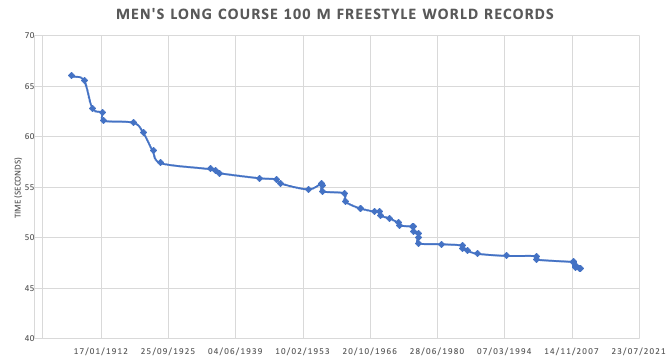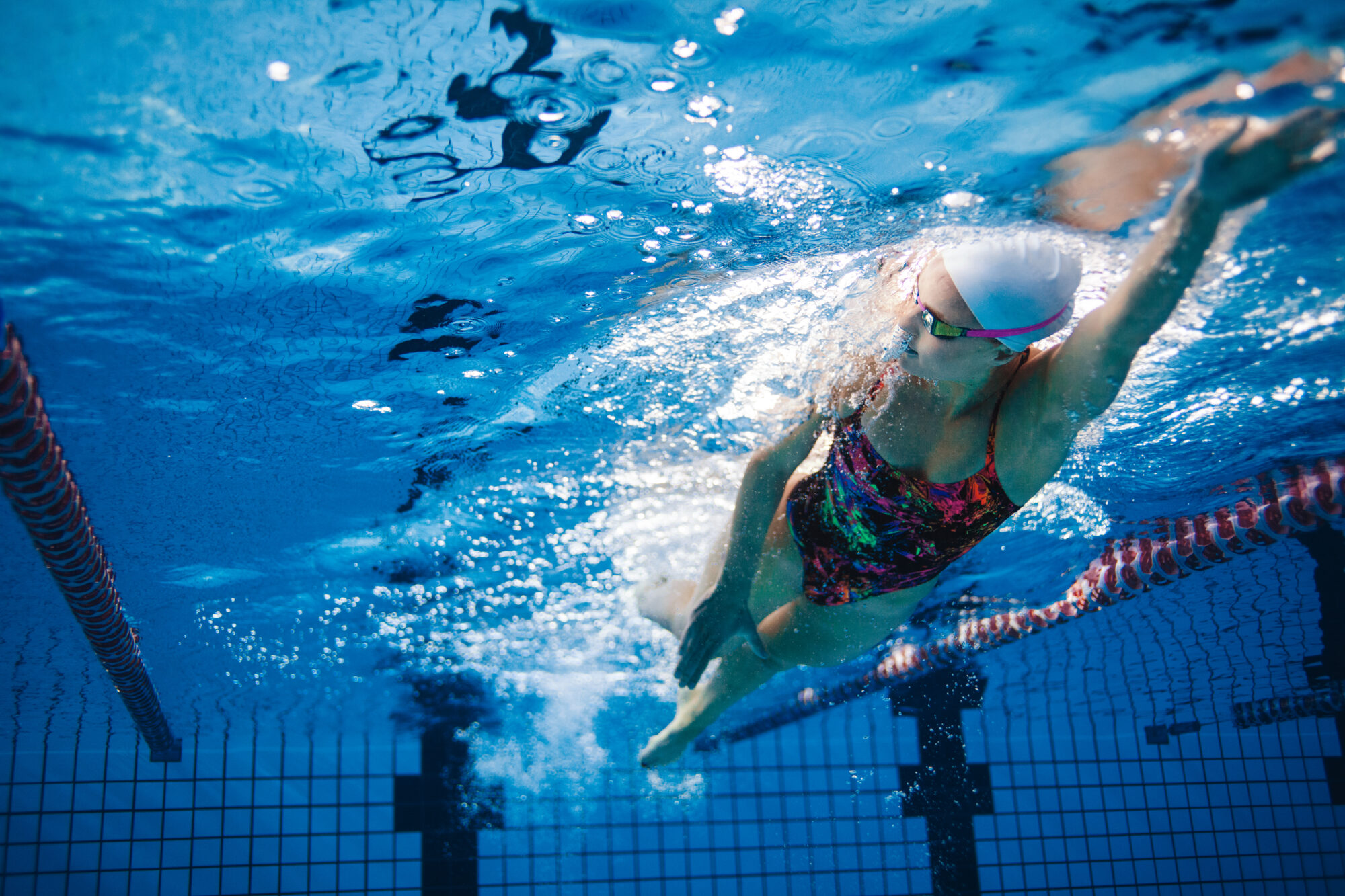After a long five years, the Olympic Games are here! We are nearing the end now, but the last few weeks have given the sporting world some great moments to cheer over. From Adam Peaty’s second gold to Tom Daley and Matty Lee’s first, it has been a welcome break.
One of my favourite parts of Tokyo 2020 (or the 2021Olympics) was that it gave a lot of sports that may typically ‘avoid the limelight’ the chance to shine. While swimming may not usually be on TV every weeknight, it’s front and centre at the Olympics with some big names dominating the pool. Records seem to be constantly broken, and the field seems to be filled with swimmers who are “the fastest in the world”. Adam Peaty – Team GB’s prized breaststroker – holds the 20 fastest 100m breaststroke times, which means that he’s consistently beating himself. And with newer, faster swimmers entering the pool, now-retired Michael Phelps’ records are already disappearing, only four of his previous 39 world records still stand in 2021.
But how are swimmers still getting faster and faster? Are we eventually going to reach a plateau of what is humanly possible, and will that be soon?
An introduction to speed swimming
Speed swimming is, as it sounds, all about going fast. There are four swim strokes to choose from: freestyle, backstroke, breaststroke and butterfly, as well as IM – or individual medley – which is a combination of all four. Races in the pool can either be ‘short-course’ or ‘long-course’ with one lap, or length, of the pool being 25 m or 50 m, respectively. At the Olympics, a long-course competition, the shortest race in the pool is the 50m, where you swim from one end of the pool to the other as fast as humanly possible, and the longest is the 1500m, a gruelling 30 laps of the pool.
The rules are simple – start when the whistle blows and touch the wall at every turn. Breaststroke and butterfly turns can carry a bit more risk – you have to make sure two hands touch the wall. But in general, the rules are straightforward, with the overall goal of each race being to finish first.
How do you go fast? The physics of swimming
To improve speed and overall performance, swimmers need to maximise propulsion and minimise hydrodynamic drag.
Maximising propulsion in water is relatively intuitive. It can be achieved by kicking harder, pulling more effectively and increasing the number of strokes made before taking a breath.
However, minimising hydrodynamic drag in water – which is approximately 800 times denser than air – requires a bit more strategy. Hydrodynamic drag is a combination of friction, pressure and wave drag, with all three playing an important role in drag management.
Wave drag – associated with turbulence at the water’s surface – occurs when kinetic energy from the swimmer is lost as it is converted into potential energy in the form of waves (Marinho et al., 2011). To lessen this type of drag, swimmers aim to keep their bodies under the surface as much as possible, reducing the formation of these waves.
Frictional resistance can result from a swimmer’s bathing costume or even their hair or skin. In contrast to runners, who can wear jewellery, loose clothing and let their hair down, swimmers aim to make their bodies as smooth and streamlined as possible to reduce frictional drag in the water. Strategies to reduce frictional drag include wearing racing costumes made from innovative materials, tucking their hair and goggle straps into bathing caps, and even shaving their entire bodies. In fact, some swimmers will even go as far as shaving their eyebrows to reduce frictional drag.
Pressure drag – also known as ‘form’ drag – is due to the distortion of flow around the swimmer. The flow of water around a swimmer’s body depends on the swimmer’s shape, size and velocity. As a result, swimmers often aim for ‘streamlined’ positions, where the body is as long and straight as possible to move through the water with the smallest amount of resistance. Less streamlined bodies create eddies, swirls of water that lead to a pressure differential between a swimmer’s front and rear, adding drag and slowing the swimmer down.
Ultimately, it’s a combination of strength and several strategies to reduce drag that is helping swimmers swim fast, but just how fast have we got?
How fast are we?
The world record progression of the 100m men’s freestyle is a good illustration of just how fast swimmers have become over the last 100 years or so. From Hungarian swimmer Zoltán Halmay’s time of 1 minute and 6 seconds in 1905 to Brazil’s César Cielo’s 46.91 seconds in 2008, swimmers have shed almost 20 seconds in this race.

This reduction in time certainly relates to the fitness of the swimmers. However, improved costumes and a better understanding of drag management play an essential role as well. Halmay, the first swimmer to break this record in 1905, swam in open water, without a swim cap or goggles, in a swimming costume that was likely made of wool, cotton or terrycloth. Several decades later, Mark Spitz – the 1970’s version of Michael Phelps – didn’t wear a swim cap and would compete with a prominent moustache that inevitably added to his frictional drag. Records continued to tick down slowly until seven records were broken in 2008 and 2009 during a time now referred to as the ‘super suit era’ of revolutionary swimming costumes.
Supported by NASA, Speedo designed an innovative swimming costume in 2004 to ‘reduce drag’. The LZR Racer was a full body swimsuit with ultrasonically welded seams that helped to reduce drag by 6%. Additionally, its ultrasonically bonded zip reduced drag by 8%. Within a month of its release, swimmers wearing the suit broke 13 world records. But by 2010, two years later, the suit was banned in competitions by FINA – the international water sports committee. This new ruling prohibited any swimming costumes that might aid speed, buoyancy and performance in order to create a more equal playing field for swimmers, as this technology could offer a clear advantage to swimmers who could afford these revolutionary suits. Thanks to the LZR Racer, swimmers can now only wear swimming costumes that go as far as their knees, the fabric must be permeable, and they cannot have a fastening device – such as a zip.
The future of swimming
Advanced technology, understanding of hydrodynamic drag, increased athleticism and improved training have all enabled drastic improvements in swimming speed over the last hundred years. With athletes better equipped than ever before, the margin of improvement is now in the fractions of seconds, but we are still seeing improvement, nonetheless. While the men’s 100m freestyle world record has stood since 2008, the women’s 100m was more recently broken in 2017 by Swedish swimmer Sarah Sjöström, beating Australian Cate Campbell’s 2016 record by 0.35 seconds.
So, while it’s unlikely that the next great swimmer is going to suddenly smash the previous world record by a margin of 5 seconds, these times will continue to tick down. From unique bodies – for instance Michael Phelps’ 2 m wingspan – to dedicated training regimes faster times are inevitable, and I don’t think we’ve met the fastest 100m swimmer of all time just yet.
References:
- Marinho, D. A., Barbosa, T. M., Rouboa, A. I., & Silva, A. J. (2011). The Hydrodynamic Study of the Swimming Gliding: a Two-Dimensional Computational Fluid Dynamics (CFD) Analysis. Journal of human kinetics, 29, 49–57. DOI: 10.2478/v10078-011-0039-4
- https://www.bbc.co.uk/newsround/56761738
- https://eu.usatoday.com/story/sports/olympics/2021/07/22/michael-phelps-olympics-swimming-where-is-he-now/7930625002/
- https://olympics.com/en/athletes/zoltan-halmay
- https://www.nasa.gov/offices/oct/home/tech_record_breaking.html
- https://www.inverse.com/innovation/olympic-glory-week-lzr-swimsuits
- https://en.wikipedia.org/wiki/World_record_progression_100_metres_freestyle
- https://scienceinswimming.weebly.com/reducing-drag.html

